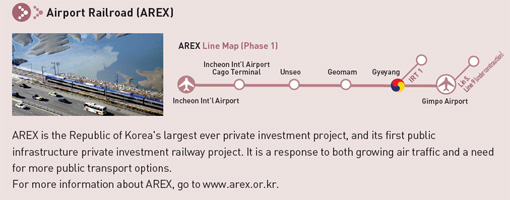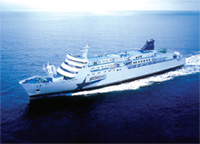Getting to KoreaArrival by Air: Korea is connected by air to every major capital in the world, either through direct flights or by connecting flights from major international airports in East Asia.
About 37 international airlines maintain regular services, with over 1,500 flights into and out of Korea every week. Korea has nine international airports: Incheon International Airport, which opened in March 2001, and Gimpo for Seoul; Gimhae for Busan; Jeju; Cheongju; Daegu; Yangyang; Muan; and Gwangju. Gimhae and Jeju operate direct flights to and from Tokyo, Fukuoka, Nagoya and Osaka in Japan.

Special airport buses and city buses leave from various points in Seoul every 15 minutes from 5:00 a.m. to 10:30 p.m. and are less expensive alternatives to the KAL Limousine Bus line which connects Incheon International Airport with 19 major hotels in Seoul.

Bugwan Ferry that connects Busan and Japan's Shimonoseki
Various steamship lines provide passenger service to Korea. Among those from the American West Coast are Waterman Steamship, American Pioneer, Pacific Far East, Pacific Orient Express, State Marine and United States Lines.
Several companies, such as the Bugwan Ferry, Korea Ferry and Korea Marine Express, provide regular ferry services that link Busan and Jejudo Island with the Japanese ports of Shimonoseki, Kobe and Hakata. Another ferry service plies between Incheon and the Chinese ports of Tianjin and Weihai.
Temporary entry for private cars is allowed for passengers arriving by ferry, providing that drivers obtain the proper documentation.